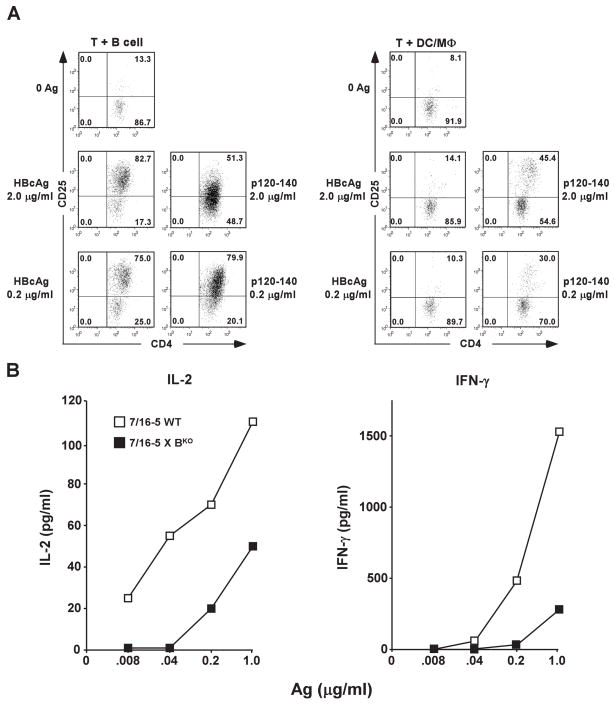Figure 1.
Naïve B cells function as APC for naïve, HBcAg-specific CD4+ T cells in vitro. (A). Fractionated, HBcAg-specific CD4+ T cells (1 × 106) derived from three unprimed, TCR-Tg mice (7/16-5) were co-cultured for 4 days with either purified, resting splenic B cells(1 × 106) or splenic DC/MØ (1 × 106) derived from three wild-type mice plus the indicated concentrations of HBcAg183 or the HBcAg-derived peptide (p120–140). CD4+ T cell activation was measured by CD25 expression as determined by FACS analysis. (B). Unprimed spleen cells pooled from either three wild-type (WT) 7/16-5 TCR-Tg mice or three 7/16-5 TCR-Tg mice bred on a B cell knock-out (BKO) background were cultured (5 × 105) with the indicated concentrations of HBcAg183 and IL-2 and IFNγ production were determined by ELISA at day 2 or day 4, respectively. Values are given as pg/ml. This experiment was performed on two occasions and the results are representative.

